



The Balkans & Black Sea Forum 2022 was held at a time of numerous geopolitical, economic and power-shifting challenges that influence the global scene and endanger the social and economic equilibrium of regions. In a world of conflict and constant disruption, the BBSF2022 aspired to pave the way for a sincere, coherent and constructive exchange of views and dialogue, needed today more than ever before.
Tap below on any person you would like to listen to his/her intervention
10.00-10.30: Welcome notes
10.30-12.00: Chapter 1: Energy supply & security, Environmental commitments in a World of sanctions & disruptions
Full session video: https://youtu.be/nyGr76g0huU
12.30-14.00: Chapter 2: Innovation, Technology, Financing, Investments at serving society
Full session video: https://youtu.be/IbJ2_I9gBP8
15.00-16.30: Chapter 3: Regional cooperation-integration based on the economic geography of the regions
Full session video: https://youtu.be/NReNRMmnxmc
17.00-18.30: Chapter 4: Connectivity – Infrastructure, the ever-growing need for new investments
Full session video: https://youtu.be/uLGmTftOIL8
10.00-10.15: Welcome notes
10.15-11.30: Chapter 5: Investing in gender innovation to build sustainable economies
Full session video: https://youtu.be/j–Umf5VhOA
12.00-13.30: Chapter 6: Global convulsions and their impact on the Balkans and the Black Sea region
Full session video: https://youtu.be/_ZM37NLN5xI
13.30-14.30: Chapter 7: Moderators’ remarks and conclusions
Full session video & closing remarks: https://youtu.be/OcYNih3wnv0
The Balkans & Black Sea Forum is a flagship economic platform and a key Summit for leading business- & policy-makers committed to enhancing stability, growth and cooperation across the Balkan and Black Sea regions. Distinguished influencers from the public & private sectors engage and interact to review challenges, assess implications, identify opportunities, and explore innovative ways for promoting security, sustainable development and bi/multi-lateral cooperation in broader Eurasia.


A. Arriving by airplane to Athens
Athens is accessible by airplane from more than 130 countries and serves as the gateway to the amazing Greek islands and other mainland destinations. The award-winning Athens International Airport – AIA (Eleftherios Venizelos International Airport) is located about 30 km (18 miles) east of the city center. You may find out more regarding flights to Athens below:
Upon arrival, three options to reach the city center are available:
EXPRESS Bus routes connect directly the Athens International Airport with the city center. Service is provided on a non-stop basis seven days a week including holidays. Buses depart from the Arrivals Level. BUS tickets are sold at the info/ticket-kiosk (located outside the Arrivals between Exits 4 and 5), or onboard (ask operator) at no extra cost.
Metro Line 3 (Athens International Airport – Douk. Plakentias – Aghia Marina) connects AIA with the city center; Trains run every 30 minutes, 7 days a week from 6:30 a.m. to 11:30 p.m. The trip from the Airport to Syntagma Square station lasts 40 minutes. Metro timetable and tickets here.
Taxis are available at the designated Taxi waiting area located at Exit 3 of the Arrivals Level. A taxi from the airport to the city center costs around €50* from 5:00 a.m. to midnight, and €70* from midnight to 5:00 a.m.
Note: The charge is determined by the time of arrival at the destination and includes all applicable surcharges and extras. Applicable surcharges include: toll cost, luggage fee, VAT and airport charge.
B. Transport alternatives in the city of Athens
There is an extensive, low cost public transport network covering the city including bus, underground, trolley, tram and taxi. You can use all means of public transport with the same ticket (not with that from/to the airport). A single ticket costs €1.40 and is valid for 90 minutes.
C. Tickets for Public Transport
Tickets and passes (Ath.ena tickets) for public transport are sold at ticket booths and machines in all Athens Metro and tram stations. There are three types of Ath.ena tickets: a paper ticket, an anonymous card that you can top up, and a personalized card. These tickets can be used on all forms of public transport.
D. Ticket Prices
A standard ticket on Athens public transport costs €1.40. Students and senior citizens over 65 are entitled to a reduced fare of €0.60 (student ID and proof of age are required upon ticket control or during purchase). Children up to the age of 6 travel free-of-charge; ages 7-18 pay €0.60 (proof of age required upon ticket control or during purchase).
Each ticket can be used for 90 minutes on any form of public transport (except services to/from the airport).
For more information on prices visit the Athens Transport website.
For more information on public transport in Athens call 11185 or visit www.oasa.gr
E. Metro
The fastest means of getting around Athens is the Metro. The Athens Metro system consists of 3 lines and connects to the tram, bus routes and suburban railway. The Metro runs daily from 5 am to midnight. Lines 2 and 3 operate until 2 am on Fridays and Saturdays. At peak hours, trains run approximately every 5-6 minutes however, during the evenings and nights trains run every 10-13 minutes. More at Athens Metro Website
Line 1 is an overground train (commonly known among Greeks as ESAP) that runs from the northern suburb of Kifissia to the port of Piraeus. It connects to lines 2 and 3 at three stations (Attiki, Omonia and Monastiraki). More at Athens Piraeus Electric Railways Website
F. Taxis
Taxis are not expensive (though there is a minimum fare of €3,50 during the day and €5 after 23:00). You can pick them up at taxi parking areas, stop them on the street or ask the reception desk to call one for you. The fare is charged per kilometer and per hour, so it is better to make certain that the meter is switched on as soon as you set off. Beat (formerly Taxibeat) is an app-based yellow taxi service which finds your location, gives you choice of taxis and offers the options of paying in cash, by card, or Paypal. Radio taxis are another option if you don’t feel like hitting the pavement to hail a cab, or if you want to ask for a specific pick-up time and date.
G. Visa Information & Requirements
Visa regulations depend on your nationality and country of origin. Please contact your local Hellenic Embassy / Consulate for full and official instructions on the specific visa regulations and application procedures that apply to you. It is the responsibility of the participant to obtain a visa, if so required.
If uncertain on what concerns your Visa Requirements, kindly visit this online link for further detailed information.
H. Letter of Invitation
Individuals need an official Letter of Invitation which can be requested upon registration to the forum. Such a Letter of Invitation shall be provided within a week of its request and following the payment of your registration. The Letter of Invitation does not financially commit the forum’s organizers in any way. All expenses incurred in relation to the Conference are the sole responsibility of the participant / attendee.
The Balkans & Black Sea Forum accepts no responsibility concerning the accuracy of the abovementioned prices and schedules of any means of transport.


The Museum hosts its collections across three levels, as well as in the archaeological excavation that lies at its foundations.
Located on the ground floor, the “Gallery of the Slopes of the Acropolis” houses finds from the sanctuaries that were established on the slopes of the Acropolis, as well as objects that Athenians used in everyday life from all historic periods.
The nine-meter high, naturally lit “Archaic Gallery”, in the east and south sections of the first floor, hosts the magnificent sculptures that graced the first temples on the Acropolis. It also displays the votive offerings dedicated by the worshippers, such as the beautiful archaic Korai (depictions of young women), the Hippeis (horse riders), statues of the Goddess Athena, sculptures of male figures, marble reliefs, and smaller bronze and clay offerings.
The Museum’s exhibition culminates on the third floor, in the glass-encased “Parthenon Gallery”. The relief sculptures of the Parthenon frieze depicting the Panathenaic procession are exhibited in continuous sequence along the perimeter of the external surface of the rectangular concrete core of the Gallery. The metopes, the marble slabs with relief representations from Greek mythology, are exhibited in between the stainless steel columns of the Gallery, which are the same in number as the columns of the Parthenon. The colossal figures of the two pediments have been placed on pedestals on the east and west sides of the Gallery. The east pediment depicts the birth of the Goddess Athena, emerging from the head of her father Zeus, and the west pediment depicts the battle between Athena and Poseidon over the land of Attica.
Having seen the Parthenon Gallery, the visitor can then return to the first floor to complete the tour with the series of works that were created after the construction of the Parthenon, namely the Propylaia, the temple of Athena Nike and the Erechtheion. The north wing of the first floor displays striking Classical sculptures and their Roman copies, as well as votive and decree reliefs dating to the 5th and 4th centuries BC, relief bases of sculptures and portraits, and finally, select works dating from the end of antiquity and the early Byzantine period.
The Museum’s exhibition program is also enriched with extensive finds from the ancient Athenian city, which were uncovered during the archaeological excavation that took place prior, to the construction of the Museum. The excavation is visible from different points on the ground and upper floors of the Museum, through a series of well positioned large glass openings. Visitors will soon be able to walk among the remains of this ancient Athenian neighborhood.
The Museum of Acropolis was designed by architect Bernard Tschumi with Michael Photiadis and inaugurated in the summer of 2009.

Athens is an historic city and capital of Greece. Many of Classical civilization’s intellectual and artistic ideas originated there, and the city is generally considered to be the birthplace of Western civilization. Athens lies 5 miles (8 km) from the Bay of Phaleron, an inlet of the Aegean Sea where Piraeus, the port of Athens, is situated. Greater Athens has an area of 165 square miles (427 square km) sourrounded by mountains of Párnis, 4,636 feet; Pentelicus, 3,631 feet; Hymettos, 3,365 feet; and Aigáleon, 1,535 feetadd to the impression of barrenness. Yet such considerations are superficial when compared with the fecundity of Athens’s bequests to the world, such as its philosophy, its architecture, its literature, and its political ideals.
Athens, with its tall buildings and contemporary shops, is the first European city when approached from the Middle East. When approached from the west, from elsewhere in Europe, what strikes the visitor is the influence of the East—in the food, music, and clamorous street life—perhaps vestiges of a time when Athens was divorced from European society under the yoke of Ottoman rule. Nevertheless, it is wrong to say that Athens is a mixture of East and West: it is Greek and, more particularly, Athenian. The city, after all, nurtured Western civilization thousands of years ago. Athens remains on the world stage to this day.
Notably, in 2004 the world came to the city for the Olympic Games, which spurred a dramatic makeover for Athens. In addition to building a raft of new sports venues and facilities (including a stadium designed by Santiago Calatrava), Athens undertook massive transportation infrastructure improvements that included dramatic expansion of public transportation and the construction of a new international airport.
Some 3 centuries after the death of Pericles (429 bce), Athenians entered upon a period of bondage that lasted almost 2,000 years. The city was freed in 1833, and in the following 170 years it was the scene of more than a dozen revolutions, another brutal foreign occupation, and a civil war of especial savagery. This long history of passion and suffering has had considerable effect on the Athenian character. The core of that character is an implacable will to survive, buttressed by a profound sense of loyalty (especially to the family) and patriotism. The Greek Orthodox Church, which is directed by a synod sitting in Athens, was a main force in keeping alive the Greek language, tradition, and literature when such things were forbidden, and most people still support it.
The climate of Athens is benign: frost is rare (the minimum temperature is 32 °F, or 0 °C) and snow seldom lies, while the summers, though hot (maximum temperature is 99 °F, or 37 °C), are dry, and a fresh northeasterly wind often blows by day. The nights are cool. The climate of the city permits outdoor activity the year round and has had an important effect on both the style of architecture and the life and political institutions of the city.
In 1833 there was almost no Athens at all. During the fight for independence, it had been entirely evacuated in 1827, and 6 years later it held perhaps 4,000 people in the straggle of little houses on the north slope below the Acropolis. The newly imported king of the Hellenes, Otto, the 18-year-old son of Louis I of Bavaria, was installed in the only two-story stone house, while his German architects hurried ahead with plans for a palace and a new Athens far out in the fields.
Below the well-sited but very plain palace, a large garden square, Síntagma (Constitution) Square, was laid out. Today it is garnished in the tourist season with some of Europe’s most luxurious cafe chairs, and at all seasons it is hemmed in by tall new buildings and elderly luxury hotels. Broad avenues were created and are still the city centre’s principal thoroughfares (Stadíou and Panepistimíou), between which an orderly grid of narrow side streets was laid out. The housing that developed was generally the sort of architecture familiar in Victorian London: solid, porched, rather imposing, the later imitations graceless and monotonous. In Athens it is called the Ottonian style, but there is little of it left as the center encroaches on old residential areas.
Once the new capital was established, the city grew at a regular rate of about 7% a year, soon reaching 50,000 inhabitants, a figure not much exceeded in the days of Athens’s greatest power and glory. By 1907 the municipality had a population of 167,479. Omónia Square had been built at the western end of the two main streets, with other broad avenues radiating from it, but it did not develop as the hoped-for balance to Síntagma.
By then the railway to Piraeus had been built, its station near the antique Agora. Indeed, the city plan projected a logical growth southward along this axis, but a real estate developer beckoned northward—the National Archaeological Museum is out this way—and the newly rich followed. The palace garden almost touched the Arch of Hadrian and the 15 mammoth columns (some of them 7 feet 10 inches in diameter) of the temple of Olympian Zeus, last of the Classical buildings built in Athens, and beyond lay empty fields. The slopes of Mount Likavittós, outside the town limits, were still pine-clad. Since then the garden has become one of the public parks in Athens. Likavittós now rears up in the middle of the city, its lower slopes built upon and many of the trees felled for a road leading to a cog railway and restaurant.
Along Panepistimíou Street rose the Academy of Athens and the University of Athens. A new Royal Palace (now the Presidential Residence) was built during 1891–97 on Herodes Atticus Street which leads to the 70,000-seat Panathenaic (Athens) Stadium, reconstructed by an expatriate Greek millionaire in time for the revival of the Olympic Games in 1896.
In 1921 the orderly progress of Athens was overturned and haphazard development began, for ethnic minorities were exchanged between Greece and Turkey, and approximately 1,500,000 Greeks, most of them penniless, came home from Asia Minor. Many swarmed into shantytowns around the fringes of Athens and Piraeus, and the area’s population soared from 473,000 to 718,000.
In the 1940s during the German occupation many people died from starvation, and the city began to fall apart from lack of maintenance. When Germans left, part of the Allied-equipped resistance refused to lay down its arms, and the civil war began. For a while the government held only the Parliament building, neighboring embassies, and a part of Síntagma Square, while the palace garden was used as a common grave.
A construction boom began in the 1950s. New apartment houses pushing up everywhere erased old social boundaries and villages that had been attached to the city in the previous expansion lost their physical identity. A network of major highways was thrown up. The west side of the historic olive grove by the Kifisós River was shorn, and hillside greenery began to disappear under housing, either unauthorized or made legal through political skullduggery. Open space vanished, without provision for parks, playgrounds, or even schools, and Athens spread down to the sea, joining up with Piraeus. Piraeus itself was transformed from one of the world’s celebrated honky-tonk ports into a clean, newly built, flower-decorated city.
The Athens master plan was enlarged several times to keep pace with spread, which by 1964 had already attained 75 square miles, with a built-up area of 17 square miles outside the plan altogether. Land values in the center quadrupled, then octuplet, and rose proportionately elsewhere. Traffic increased almost to the saturation point at rush hours, and the city continued to sprawl beyond its planned limits. As international tourism increased, Ellinikón Airport, south of the city, was expanded and modernized.
The city water supply from an artificial lake at Marathon was insufficient to supply the new building construction, and the Mórnos River 110 miles to the northwest was dammed and tapped. Installation of a modern sewer system was undertaken, together with controls to check the floods that roar into Athens when heavy rains pour off the denuded mountains.
The older Athens has not entirely disappeared. By the excavated Agora lies the lively quarter Pláka, on the north slope of the Acropolis. Small, one-story houses, dating from about the time of independence, are clustered together up the hillside in peasant simplicity. There are appropriately tiny squares with tavernas, once celebrated for their folk music, dancing, and simple fare. The baths built by the Turks still function morning and afternoon and the taverna signs are multilingual.
Acropolis (designated a World Heritage site in 1987) rises some 500 being an obvious choice of citadel and sanctuary from earliest times. That it could be something more is evidenced in the Parthenon, one of the brightest jewels in humankind’s, let alone Athens’s, treasury. As deceptively simple as Socrates’ conversation, this columned, oblong temple is the expression—without a trace of strain or conflict—of a human ideal of clarity and unity. The architectural genius is concentrated in the exterior, for within was a shelter for the goddess Athena—the patroness who lent her name to the city—not a place for mass worship.
In 1801 the British ambassador, Lord Elgin, arrived with an imperial decree permitting him to pull down Turkish houses on the Acropolis to seek fragments of sculpture. Among the 50 pieces he took home was most of the remaining Parthenon sculpture, which he later sold to the British Museum for £35,000. The Greeks have forgiven the clumsiness of the Venetian engineers, the accuracy of Venetian cannoneers, and the vandalism of the Turks, but they still nurture rancor against Elgin.
When Turks, who had occupied Athens since 1456, departed, they left the monuments in a state of ruin, the ground covered with garden plots and several hundred small huts. After Greece won its independence, Otto, the first king of the Hellenes, had everything that postdated the Classical period swept away, set scholars to work identifying the remains, and encouraged some reconstruction.
Less than 1,000 feet (300 metres) southeast of the Parthenon is the New Acropolis Museum, which was designed by Bernard Tschumi and opened in 2009. A dramatic glass and concrete structure, it has some 10 times the exhibition space of the old Acropolis Museum.
Other notable buildings close to Acropolis is Herodes Atticus 5,000-seats theater, built by a rich Roman as a memorial to his wife in 161 ce which is now used for Athens summer festivals of music and drama. On the Hill of the Nymphs, an Austro-Greek, Baron Sina, built an observatory in 1842.
The Agora, started restored in 1931 by the American School of Classical Studies that paid $2.5 million compensation to several hundred families living there. Financed by, among others, the Rockefeller Foundation, the Marshall Plan, and the Greek government, the work went on until 1960. It includes what has been called “the pitiless replica of a 180-columned portico of the 2nd century bc,” which serves as a museum.
The population of Greater Athens increased considerably after the war of independence in the early 1830s. The rapid growth was largely attributable to the great influx of refugees from Asia Minor in the early 1920s and the migration of rural inhabitants from the provinces during World War II and the communist rebellion (1946–49). By the 1960s Athens had become a bustling cosmopolitan city. Almost all Greeks adhere to the Eastern (Greek) Orthodox faith.
Industry and trade: Since World War I Athens has become the hub of all mercantile business, export and import. With Piraeus it is the most important manufacturing city in Greece. Athens accounts for half of the jobs in industry and handicrafts, and earnings are much higher than the national average. There are cloth and cotton mills, distilleries, breweries, potteries, flour mills, soap factories, tanneries, chemical works, and carpet factories. Exports include olive oil, tomato products, wine, cement, bauxite, and textile manufactures. Publishing enterprises are important.
Athens accounts for more than half of the cars, trucks, and buses in use in the country. Furthermore, the number of merchant ships registered in Greece increased since the late 1960s as Greek ship-owners answered the government’s call to bring their foreign-registered ships home (though many Greek ships remain under other flags). Scores of shipping offices have opened in refurbished Piraeus, while on weekends shipping magnates sail to the nearby islands of Hydra and Spetses in chrome-fitted luxury yachts.
Snarled traffic and air pollution, long endemic problems for Athens, were both significantly reduced by the extensive transportation infrastructure improvements that were undertaken to prepare Athens to host the 2004 Olympic Games. A new airport, Athens International Airport—located east of the city- was completed in 2001. Before the Games’ opening ceremony, some 17 miles (27 km) of track and 28 stations were added to the metropolitan transit system, which includes an electrified rail line, buses, and trolleys. By the 2010s the Athens Metro network was being used by about 650,000 passengers per day. Larissa, the main railway station, links the city with the rest of the country and the continent

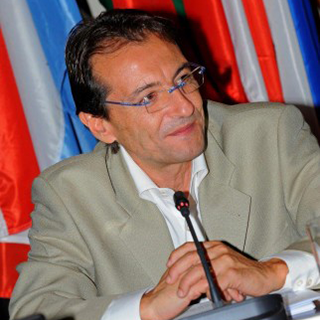 Mr. Giannis Balakakis
Mr. Giannis Balakakis Ambassador (a.h.) Michael B. Christides
Ambassador (a.h.) Michael B. ChristidesProgramming partner: Institute of Energy for South East. Europe
 Ambassador Omar Amer Youssef
Ambassador Omar Amer Youssef Ambassador Burak Özügergin
Ambassador Burak Özügergin Mr. Dimitris Kardomateas
Mr. Dimitris Kardomateas Mr. Erik Holmgren
Mr. Erik Holmgren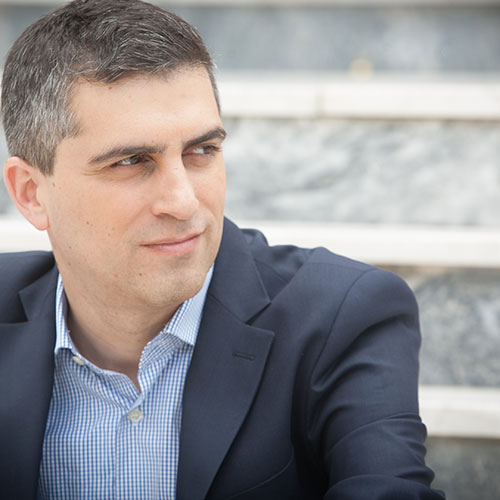 Dr. Christos Dimas
Dr. Christos Dimas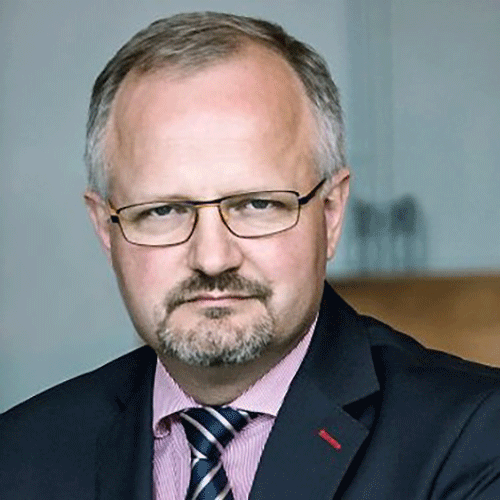 Mr. Peter Svec
Mr. Peter Svec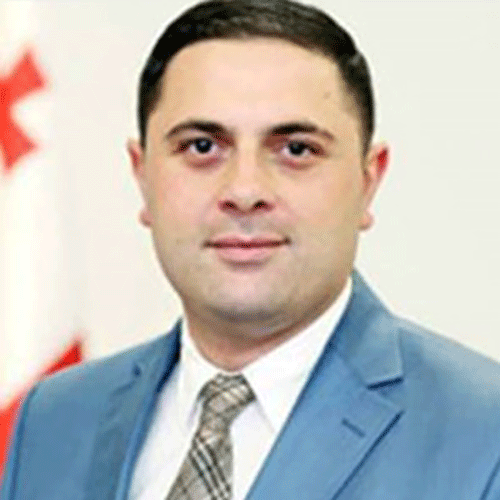 Mr. Romeo Mikautadze
Mr. Romeo Mikautadze H.E. Ms. Željka Cvijanović
H.E. Ms. Željka Cvijanović Ambassador Lazar Comanescu
Ambassador Lazar Comanescu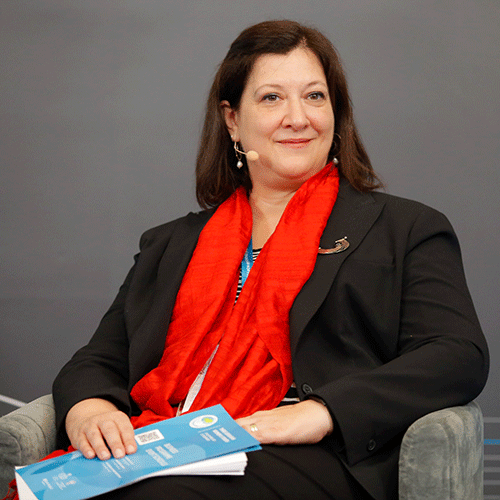 Ms. Alia El-Yassir
Ms. Alia El-Yassir Ms. Eleni Marianou
Ms. Eleni Marianou Mr. Wouter Zweers
Mr. Wouter Zweers Ambassador Xiao Junzheng
Ambassador Xiao Junzheng Mr. Umberto de Pretto
Mr. Umberto de Pretto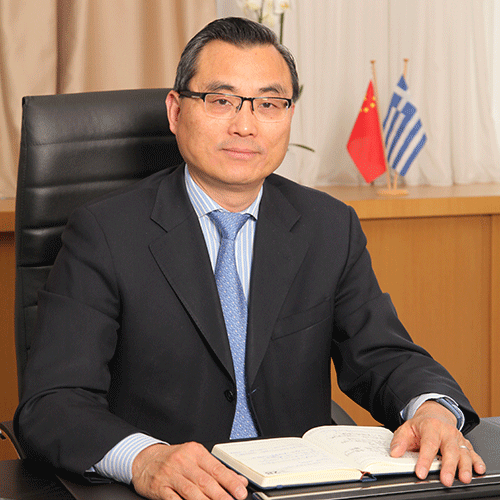 Mr. ΥU Zenggang
Mr. ΥU Zenggang Dr. Haris Lambropoulos
Dr. Haris Lambropoulosby invitation only
Programming partner: UN WOMEN
 Ms. Alia El-Yassir
Ms. Alia El-Yassir Ms. Emine Perviz Erdem
Ms. Emine Perviz Erdem Dr. Avtandil Kasradze
Dr. Avtandil Kasradze Ms. Esra Doğan Tulgan
Ms. Esra Doğan Tulgan Ms. Valentina Disoska
Ms. Valentina Disoska Ambassador Angelina Eichhorst
Ambassador Angelina Eichhorst Mr. Daniel Mitov
Mr. Daniel Mitov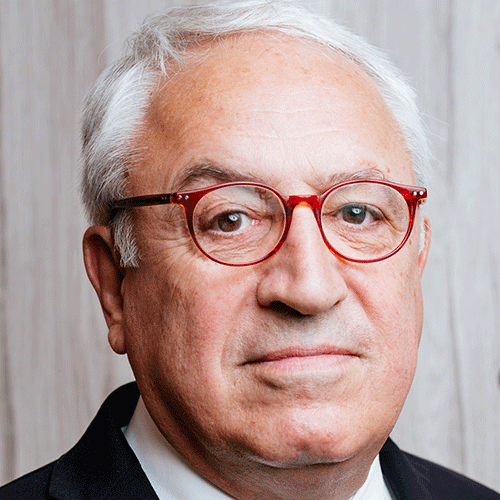 Dr. Spyridon Flogaitis
Dr. Spyridon Flogaitis Mr. Jim Morris
Mr. Jim Morris Ambassador (a.h.) Michael B. Christides
Ambassador (a.h.) Michael B. Christides Mr. Anthony D. Papayannides
Mr. Anthony D. Papayannides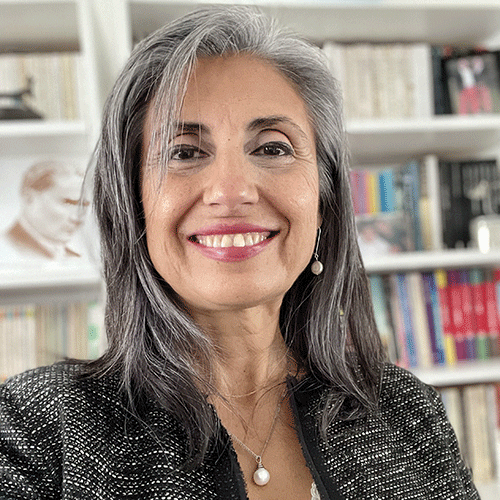 Ms. Merâl Güzel
Ms. Merâl Güzel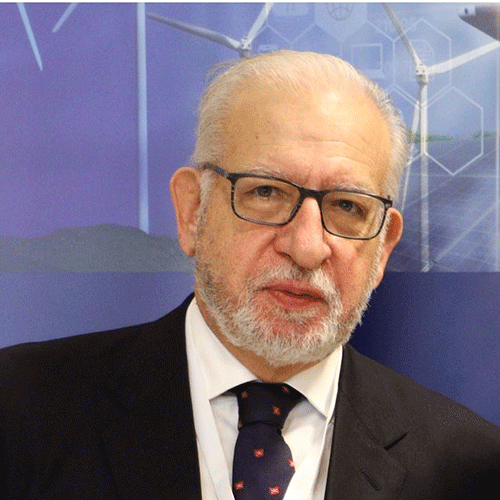 Mr. Costis Stambolis
Mr. Costis Stambolis Ms. Odin Linardatou
Ms. Odin LinardatouBy registration till 13/12/2022, 13h00
